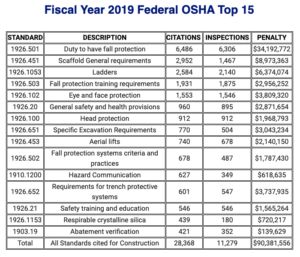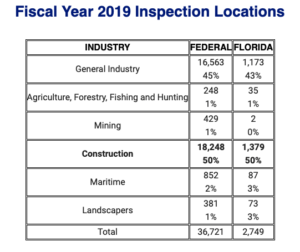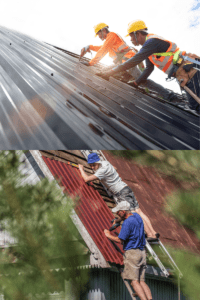Safety Never Takes a Day Off
Roofing safety is a topic that many homeowners often don’t consider when meeting with potential roofing contractors for their roof replacement. More so, many inexperienced homeowners, to save money, will opt for DIY repairs or replacements with little to no regard for their own safety. Failing to take all the proper safety precautions can lead to serious injury and possibly, death. However, safety procedures are not just for homeowners. As we’ve mentioned before in previous articles, it is important to ask potential roofing contractors what safety policies they have in place. You must choose a roofing contractor that is committed to the well-being of your home and its employees. After all, the possibility of falling is not any less for roofers than it is for homeowners.
Recently, a Jacksonville roofing company has been cited by The Occupational Safety and Health Administration (OSHA) for failing to protect workers from falls at two work sites. The company, Florida Roofing Experts Inc., faces penalties totaling $1,007,717. For OSHA as a whole, the citation and penalty data is as follows for the fiscal year 2019:


OSHA takes worker safety very seriously. Therefore, your roofing contractor should as well. Beyond protecting the safety of your home and its employees, maintaining stringent safety standards helps protect the financial well-being of the company. With that being said, what should proper safety procedures include? What type of safety equipment should a roofer be using?

Safety Equipment: A Must
Each roofing company, when on the job site, should have a safety manual, a code of safe practices, and emergency procedures. They should each be wearing a harness, with proper lifelines and anchors. Fall protection should always be present and in use. Additionally, each roofer should have personal protection equipment which includes a hard hat, safety glasses/ goggles, respirators, ear protection, work boots, and work gloves.
Other Safety Procedures
In addition to correctly using the required safety equipment, roofers should secure their ladders and ensure they extend three feet above the roof. When loading heavy materials onto the roof, they should never be carried up a ladder. A forklift, conveyor, or hoist should be used to lift heavy materials onto the roof. Additionally, caution tape and/or warning signs should be set up below the work areas.
Roofing Safety and Why It Should Matter to You
While the safety equipment and procedures listed above are just a brief glimpse into the practice of roofing safety, homeowners must understand the immense danger of working without proper precautions in place – for homeowners and roofers alike. While homeowners may be tempted to work on their roof to save money, the cost could be far greater should something goes wrong. Personal safety should always be a top priority. Hiring an OSHA-trained professional with the proper equipment is certainly the safest bet- in more ways than one!